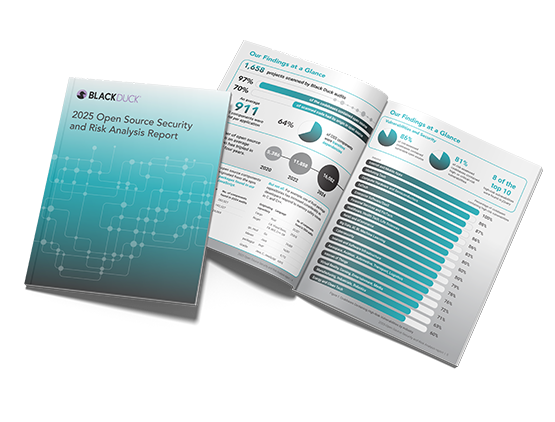Gartner, in its “Market Guide for Software Composition Analysis,” details the need to make software composition analysis (SCA) part of your application security testing tool suite. We discussed the what and why in a recent blog post; today let’s discuss the how.
A growing number of companies are adding SCA tools to their toolbelts as the need for and use of open source software continues to grow unabated. The explosive growth of open source use is not new, and at the heart of open source usage is its primary benefit in commercial software development: speed. When paired with another growing trend in software development, the adoption of DevOps, the importance of speed, automation, and tight integration into existing toolsets increases even more.
Four considerations when adding software composition analysis to your toolset
There are several things to consider when choosing a software composition analysis tool, but a few key things are critical to implementing a long-term open source strategy.
1. Discovery
Understanding what open source is in your code is the first crucial step. After all, you can’t fix what you don’t know you have. When choosing an SCA solution, you have to look at each toolset’s language coverage to be sure it includes the languages you use today. But don’t forget to look toward the future. Your needs may expand and grow over time, and you don’t want to quickly outgrow your toolset. Second, be sure you understand what discovery methods the tool employs to find open source. Scanning package managers are quick and efficient but they can miss open source that may have been modified or copied over in pieces. In these cases, you’ll want a more sophisticated scanning approach. Additionally, you might not always have access to source code, so you’ll want to choose a tool that can scan binaries.
2. Vulnerability data
Once you have a complete Bill of Materials (BoM), it needs to be mapped to known security vulnerabilities. Tools that have a diverse set of data sources and their own research team augmenting the data will provide the most comprehensive and actionable data. As the number of vulnerabilities continues to increase year over year and DevOps practices require teams to continue to increase speed and agility, finding a vendor that not only reports on vulnerabilities but prioritizes them and provides actionable remediation guidance becomes even more important. Note that the National Vulnerability Database (NVD) is a great source of vulnerability information, but it shouldn’t be your only source. Vulnerabilities are reported in a variety of places and they can take some time to find their way to the NVD.
3. License data
Security has taken center stage in the open source realm as major breaches like Apache Struts often make front page news. But license risk in open source can be just as costly if not managed properly. Finding a tool that combines expansive coverage of open source licenses, as well as comprehensive discovery methods, helps drastically reduce that risk. And implementing the proper policies up front increases the speed at which new open source components can be approved and used, because teams can set the policy and let the tool do the rest.
4. Integrations
To keep teams working quickly and efficiently, it’s best to have a tool that works seamlessly with the tools that teams are already using. Ensuring that an SCA tool integrates across the software development life cycle (SDLC) is key to adoption. And don’t just stop at CI/CD tools. Integrating an SCA tool into the IDE earlier helps developers make informed choices about their open source usage sooner, and sending issues directly into the issue tracker they already use speeds remediation. These actions combined can have a big impact on speed and efficiency—fewer issues make it into the codebase, and those that do go directly to tools developers are already familiar with. Finally, beyond just integration at various points in the SDLC, finding a tool that can meet a broad set of your application security testing (AST) tool requirements can provide an even more tightly integrated experience for development teams.
To that end, Gartner’s “Technology Insight for Software Composition Analysis” offers specific advice around adding SCA tools into an existing AST program: “Organizations evaluating SCA tools should generally first consider the tools offered by their existing testing tool provider. As noted, the combination of [static application security testing (SAST)] and SCA can help deliver higher-fidelity results.”
There are benefits to looking to one vendor for multiple AST needs, according to Gartner. Not only do you get the benefits of easier administration and maintenance, and fewer vendors to manage, but often the tools can come with tighter integration points and easier installation than using multiple point solutions.
Combining SAST and SCA provides added benefits
Important to consider, especially when thinking about adding SAST and SCA to your testing suite, is the added benefit you get from bringing the results from these two tools together. Synopsys offers two specific ways of executing on this convergence:
- Code Sight™: The Code Sight IDE plugin works within the developer’s IDE context, analyzing dependencies and flagging security issues as developers code. Plus, in addition to integrating with Black Duck® for SCA results, Code Sight also works with our industry-leading SAST tool, Coverity®, to display SAST and SCA issues side-by-side right in the IDE.
- Vulnerability impact analysis: Black Duck analyzes vulnerabilities to determine whether a vulnerability is in your call path, providing an additional data point to consider when prioritizing remediation efforts. This data point, in conjunction with our advanced Black Duck Security Advisories data, allows teams to quickly prioritize, triage, and fix critical vulnerabilities first.
In addition to our Coverity SAST and Black Duck SCA tools, Synopsys also offers tools for interactive application security testing (IAST) and fuzzing. And given the rapid adoption of DevOps and DevSecOps, organizations can find themselves looking for expert guidance on how to integrate these practices into their development life cycle. The Synopsys services team offers the Building Security in Maturity Model (BSIMM) report that assesses your current security program, benchmarks that program against your peers, and highlights the areas to focus on first to move your organization forward. And the Maturity Action Plan (MAP) identifies the best path forward to execute on your security strategy.
Gartner makes it clear in its “Market Guide for Software Composition Analysis” that adopting an SCA tool is a vital part of application security: “Multiple risk factors and explosive growth in open source software usage make software composition analysis an essential tool for application security.” Deciding which approach to take will ultimately depend on the goals and priorities each organization sets. But given the trends in the application security space—explosive growth of open source, rapid adoption of DevOps, and a need to shift security as far left as possible for optimal results—choosing an AST vendor like Synopsys that can help assess your current state, recommend a path forward, and partner with you to achieve not only your SCA goals, but your wholistic AppSec strategy, can provide unmatched benefits.

What's in your code?
Explore insights into the current state of open source security and get recommendations for securing your open source supply chain
Continue Reading
Contextualizing risk in the AI era
Sep 05, 2025 | 5 min read
Addressing the hidden risks of AI coding tools
Aug 18, 2025 | 1 min read
What you need to know about the NIST Secure Software Development Framework
Aug 12, 2025 | 5 min read





